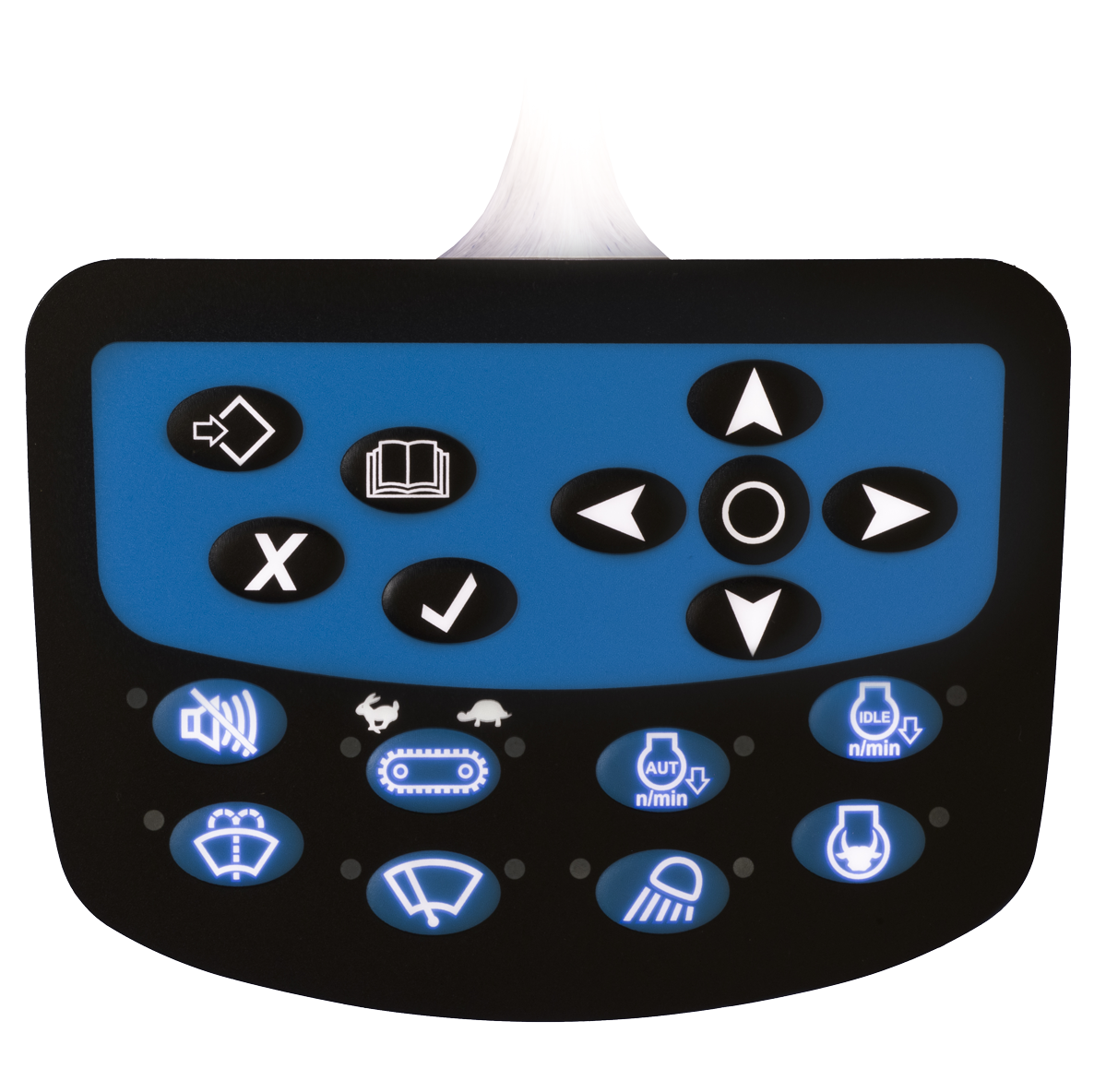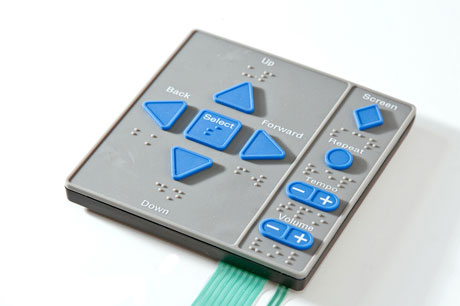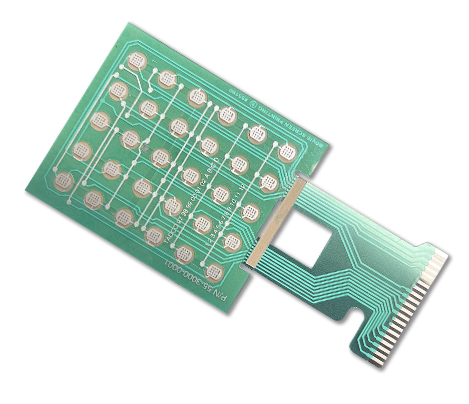Top Applications for Membrane Switches in Consumer Electronics
Top Applications for Membrane Switches in Consumer Electronics
Blog Article
Understanding the Value of Membrane Switches in Interface
Membrane buttons are integral elements in the layout of reliable interface, promoting not only functionality but likewise improving visual allure and user interaction. Their distinct attributes, such as resistance to ecological variables and customizable styles, make them appropriate for a varied selection of applications throughout several sectors. As we discover the future trends and numerous benefits connected with Membrane modern technology, it becomes clear that these buttons are more than just components; they stand for a merging of advancement and functionality. The effects of this modern technology on individual experience deserve examining better.
What Are Membrane Switches?

The spacer layer, which includes adhesive buildings, enables for the separation of the circuit layer from the overlay, making sure that the button stays in a non-activated state until pressed. When stress is related to the overlay, it compresses the spacer layer, bridging the gap and finishing the circuit in the underlying layer. This style not only decreases the physical space required for conventional mechanical switches but additionally enhances the toughness of the tool, as Membrane switches are generally immune to dust, dampness, and various other environmental factors.
Commonly discovered in applications ranging from customer electronic devices to clinical devices, Membrane switches are integral to contemporary innovation, offering a reliable and easy to use interface that lines up with modern style demands.
Benefits of Membrane Switches
While various button modern technologies exist, Membrane Switches offer unique advantages that make them particularly desirable in various applications. Among the key benefits of Membrane buttons is their compact layout, which enables space-saving applications in gadgets where real estate is limited. Their thin account not just improves visual allure however additionally assists in light-weight construction.
An additional substantial advantage is their resistance to ecological elements. Membrane switches are commonly sealed versus moisture, dirt, and contaminants, making them suitable for usage popular settings, such as medical gadgets and industrial tools. This durability expands the life-span of the button, lowering maintenance costs and boosting reliability.
Furthermore, Membrane switches can be customized to satisfy specific layout demands, incorporating special graphics and colors that boost individual interaction. Their responsive comments options can additionally be tailored to give an enjoyable user experience. Furthermore, Membrane switches are cost-efficient, particularly in high-volume applications, as they can be generated effectively.
Applications in Different Industries

In the customer electronics market, Membrane switches are common in tools such as microwaves, cleaning makers, and remotes. Their responsive responses and aesthetic alternatives improve user experience while giving a smooth, modern-day look. Additionally, auto producers utilize Membrane switches in dashboard controls and infotainment systems, where room is restricted, and individual involvement is vital.
In addition, the industrial sector leverages Membrane switches in control panels for equipment and tools, permitting instinctive procedure in typically rough environments. Their resistance to chemicals and dampness makes sure durability and dependability in these applications. On the whole, discover here the versatility of Membrane Switches adds substantially to their extensive usage, making them vital in numerous technological domain names.
Design Factors To Consider for Membrane Buttons

When creating Membrane buttons, a number of key considerations have to be taken into consideration to guarantee ideal performance and individual experience. The selection of products is critical; choosing long lasting, top quality substrates can improve the button's durability and resistance to environmental elements such as wetness and temperature variations.
Second of all, the layout of the graphic overlay ought to prioritize clarity and simplicity of use. Icons and message must be clear, and the design ought to assist in user-friendly communication (membrane switches). Furthermore, responsive feedback is crucial; including a tactile dome or other mechanisms can enhance the customer experience by giving physical confirmation of activation
One more crucial variable is the switch's electric performance. Developers need to make sure that the conductive traces are properly developed to lessen resistance and avoid signal disturbance. This includes assessing the needed actuation pressure and making sure compatibility with the electronic elements they will certainly interface with.

Future Trends in Membrane Technology
As technology continues to development, Membrane buttons are positioned to advance substantially, driven by innovations in products and making strategies. One emerging pattern is the incorporation of innovative materials, such as versatile substratums and conductive inks, which improve resilience and reduce the total weight of Membrane switches. These materials not only boost the tactile feedback yet likewise enable for the design of buttons that can hold up against harsher environmental conditions.
In addition, the combination of touch-sensitive modern technologies is transforming standard Membrane Switches right into more interactive interface. Capacitive touch sensors installed within Membrane button panels can provide a much more responsive and user-friendly individual experience, straightening with the expanding demand for smooth, modern-day layouts in consumer electronic devices.
Additionally, improvements in printing techniques, such as digital and 3D printing, enable fast prototyping and personalization of Membrane buttons. This adaptability enables manufacturers to react quicker to market demands and customer preferences.
Last but not least, sustainability is becoming a considerable emphasis, with makers discovering environment-friendly materials and processes. As these fads unfold, the future of Membrane modern technology promises boosted functionality, aesthetic appeal, and environmental obligation, strengthening their role in advanced customer interfaces across different sectors.
Conclusion
Finally, Membrane Switches stand visit this page for a crucial component in the design of user interfaces, combining functionality with aesthetic versatility. Their advantages, including toughness and resistance to ecological factors, make them ideal for diverse applications throughout numerous industries. Thoughtful design factors to consider boost individual interaction and experience. As advancements in innovation proceed, the development of Membrane buttons is expected to additional refine individual interfaces, driving technology and enhancing usability in a progressively complicated technical landscape.
Membrane buttons are integral components in the design of effective individual interfaces, assisting in not just performance yet also enhancing visual allure and individual interaction.Membrane Switches serve as an important part in various customer interfaces, promoting a seamless communication in between individuals and digital devices.While countless button innovations exist, Membrane Switches offer distinct advantages that make them especially desirable in different applications.Moreover, Membrane buttons can be tailored to satisfy details design requirements, integrating distinct graphics and colors that improve about his customer interaction.In conclusion, Membrane Switches stand for a crucial part in the style of user interfaces, integrating performance with visual versatility.
Report this page